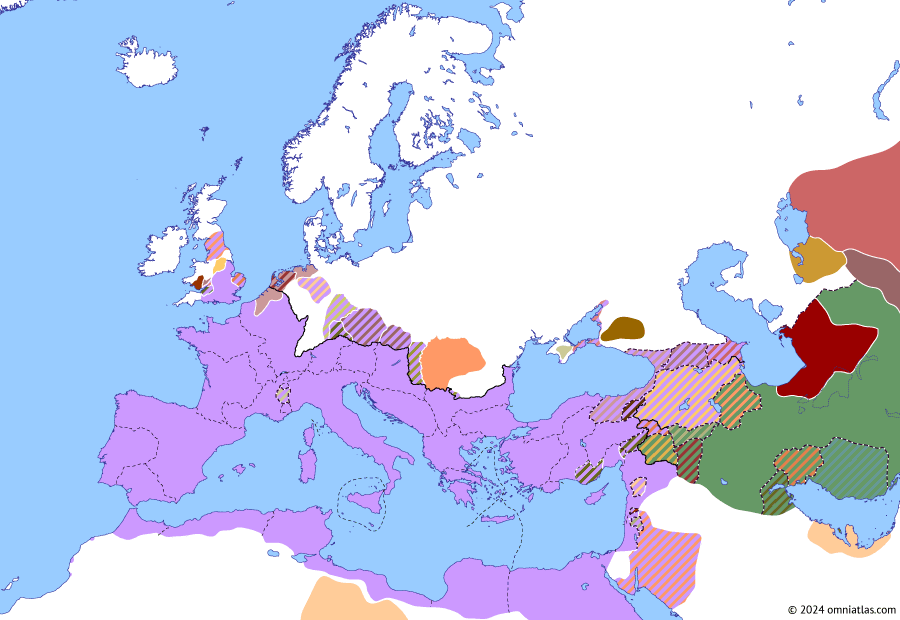Europe 47 AD: Roman Conquest of Britain

47AD
47AD
Julio-Claudian Dynasty
-27–68 Julio-Claudian Dynasty
68–96 Flavian Dynasty
96–192 Nerva–Antonine Dynasty
192–235 Severan Dynasty
235–268 Crisis of the Third Century: Turmoil
268–284 Crisis of the Third Century: Restoration
284–311 Diocletian and the Tetrarchy
311–363 Constantinian Dynasty
363–383 Valentinianic Dynasty
383–408 Theodosian Dynasty: Divided Empire
408–425 Theodosian Dynasty: The West Besieged
425–441 Theodosian Dynasty: Fall of Africa
441–457 Theodosian Dynasty: Hunnic Wars
457–1803 NO MAPS FOR THIS PERIOD YET
1803–1814 Napoleonic Wars
1814–1815 Vienna and Waterloo
1815–1848 Congress Europe
1848–1850 Springtime of Peoples
1850–1859 Crimean War
1859–1862 Italian Unification
1862–1871 German Unification
1871–1914 Imperial Europe
1914–1918 Great War
1918–1922 Armistice Europe
1922–1939 Rise of Fascism
1939–1942 World War II: Blitzkrieg
1942–1945 World War II: Fall of the Third Reich
1945–1990 Cold War
1990–2010 Post-Cold War Europe
2010–pres Crisis of Europe
Roman Conquest of Britain
late 6AD Tiberius’ Campaigns in Germania
Sep 9AD Battle of the Teutoburg Forest
16AD Battle of Idistaviso
18AD Arminius’ War with Maroboduus
26AD Roman Clients in Germania
36AD Civil Wars of Artabanus II
23 Jan 41AD Reign of Caligula
Aug 43AD Claudius’ invasion of Britain
47AD Roman Conquest of Britain
sum 49AD Bosporan War
early 54AD Iberian–Armenian War
sum 59AD War of the Armenian Succession
60/61AD Boudica’s Rebellion
fall 62AD Battle of Rhandeia
Oct 66AD Great Jewish Revolt
7 Jun 68AD Downfall of Nero
Following the capture of Camulodunon (43 AD), Claudius returned to the continent, leaving command in Britain to his general Aulus Plautius. Accepting the Iceni, Dobunni, and Brigantes as client states, Plautius consolidated the Roman hold in southern Britain by conquering the Catuvellauni heartland. Defeated, Caratacus, the last Catuvellauni king, fled to what is now Wales, where British tribes would continue to resist the invaders for several decades.
This map has in-depth notes in the Journal, exclusive to Patrons on Classical Tier and above. Find them in the events descriptions, marked with the Journal icon .